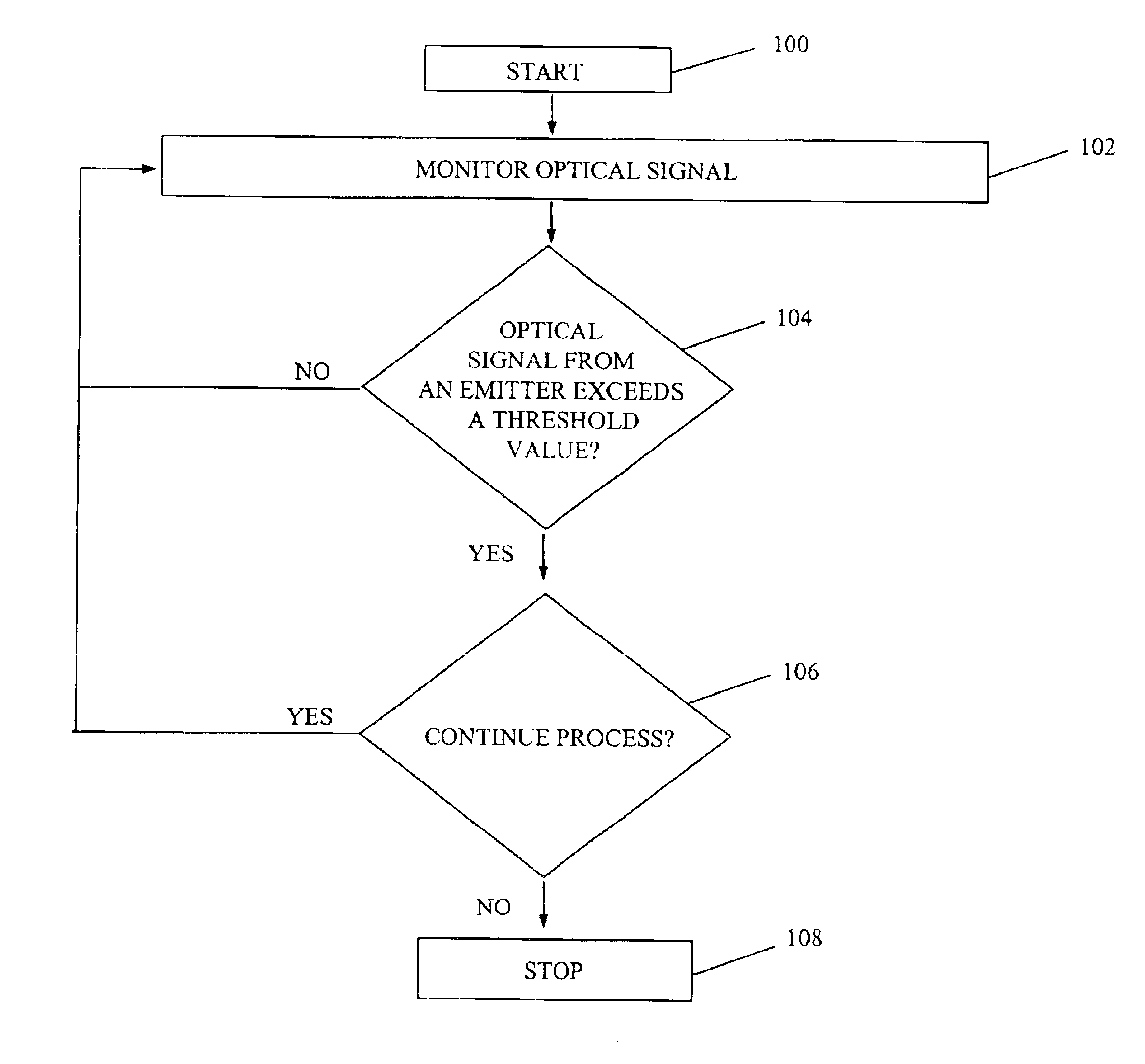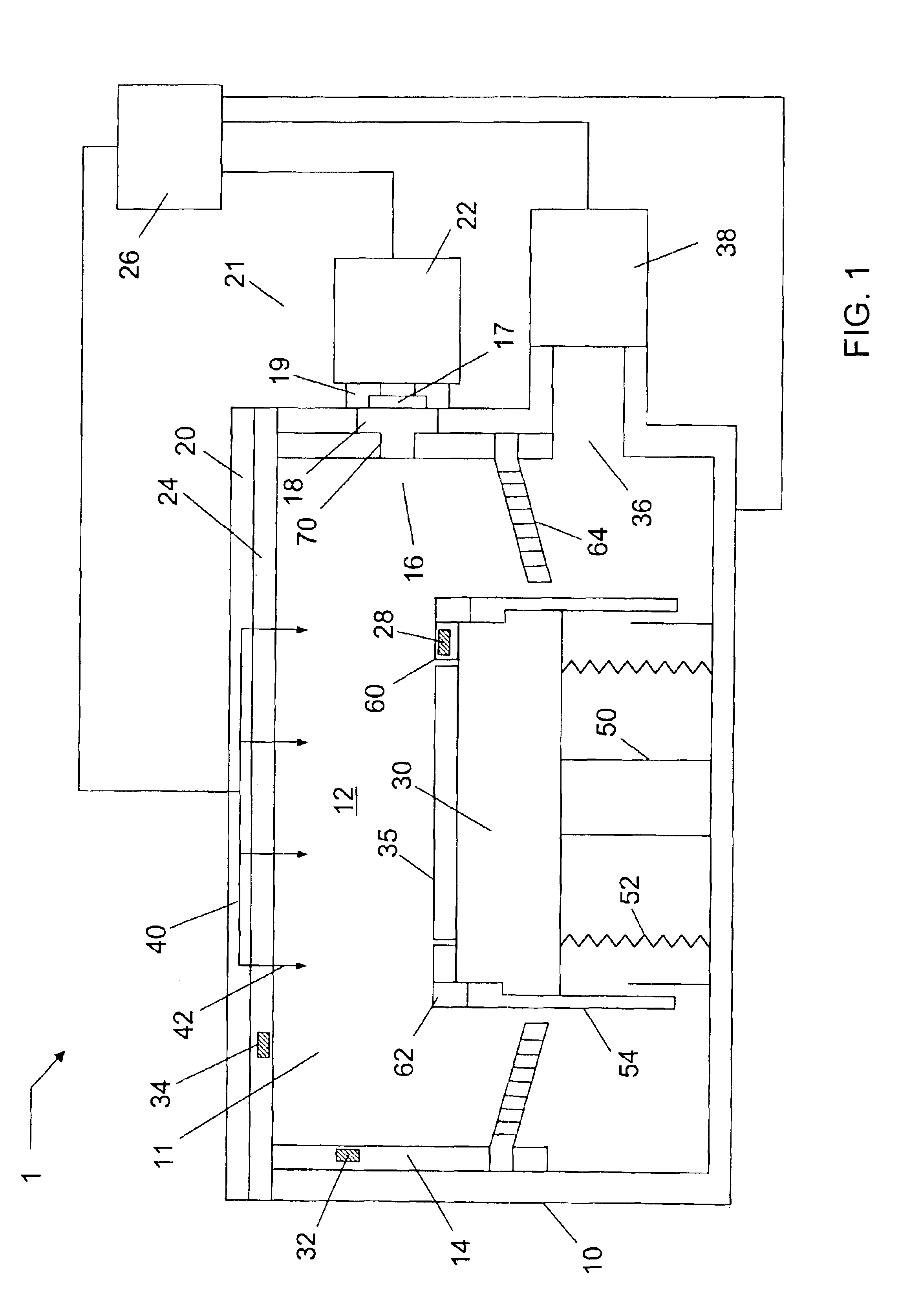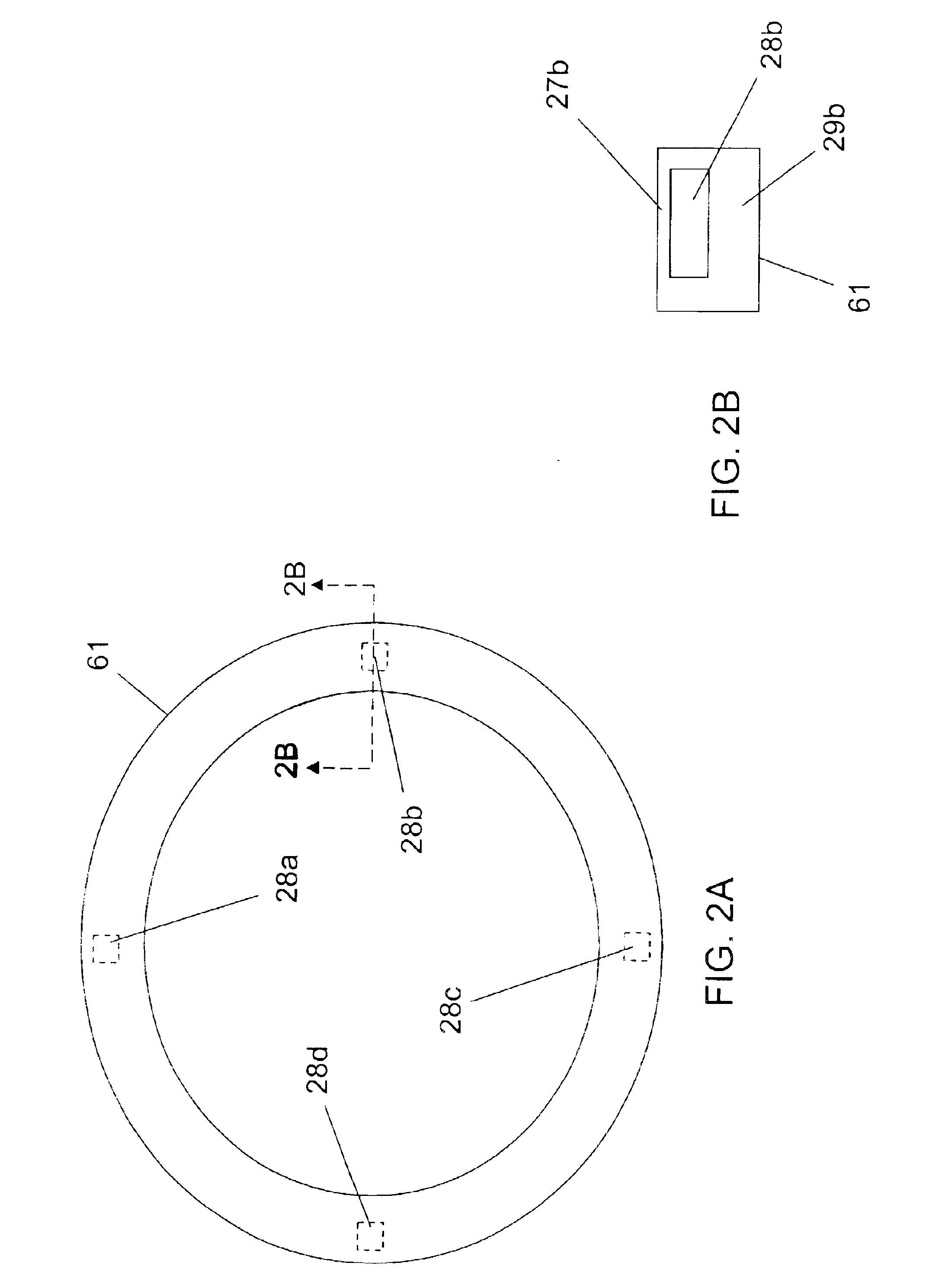Monitoring erosion of system components by optical emission
a technology of optical emission and system components, applied in the field of plasma processing, can solve the problems of plasma processing performance degradation, system failure complete, and the consumable nature of replaceable components, and require frequent maintenance of the plasma processing system
- Summary
- Abstract
- Description
- Claims
- Application Information
AI Technical Summary
Benefits of technology
Problems solved by technology
Method used
Image
Examples
Embodiment Construction
[0039]FIG. 1 shows a simplified block diagram of a plasma processing system. A plasma processing system 1 is depicted in FIG. 1 comprising a plasma processing chamber 10, an upper assembly 20, an electrode plate 24, a substrate holder 30 for supporting a substrate 35, and a pumping duct 36 coupled to a vacuum pump 38 for providing a reduced pressure atmosphere 11 in plasma processing chamber 10. Plasma processing chamber 10 can facilitate the formation of a processing plasma in a process space 12 adjacent substrate 35. The plasma processing system 1 can be configured to process various substrates (i.e. 200 mm substrates, 300 mm substrates, or larger).
[0040]A gas injection assembly 40 can introduce process gas 42 to the plasma processing chamber 10. The gas injection system 40 can include a showerhead, wherein the process gas 42 is supplied from a gas delivery system (not shown) to the process space 12 through a gas injection plenum (not shown), a series of baffle plates (not shown) ...
PUM
 Login to View More
Login to View More Abstract
Description
Claims
Application Information
 Login to View More
Login to View More - R&D
- Intellectual Property
- Life Sciences
- Materials
- Tech Scout
- Unparalleled Data Quality
- Higher Quality Content
- 60% Fewer Hallucinations
Browse by: Latest US Patents, China's latest patents, Technical Efficacy Thesaurus, Application Domain, Technology Topic, Popular Technical Reports.
© 2025 PatSnap. All rights reserved.Legal|Privacy policy|Modern Slavery Act Transparency Statement|Sitemap|About US| Contact US: help@patsnap.com



